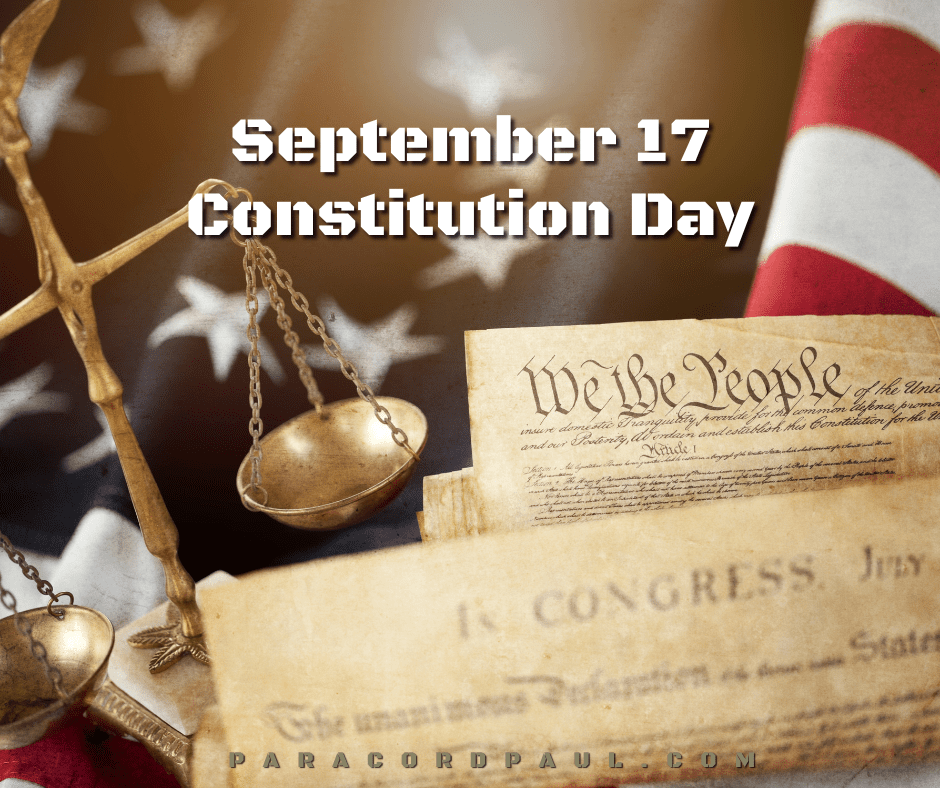Constitution Day, September 17: A Refresher

It’s been a while since I was in school. I do know that back then, we were taught the grand history of our country—the good and the bad. Now, it’s clear this is no longer taught; therefore, many citizens have no idea or appreciation of what a wonder and miracle the Constitution is.
Constitution Refresher
Constitution Day, celebrated on September 17 in the United States, marks the anniversary of the signing of the U.S. Constitution in 1787. This day is important for several reasons:
In essence, Constitution Day commemorates the enduring principles of freedom, justice, and governance enshrined in the U.S. Constitution, highlighting the importance of active participation in maintaining a democratic society.
Why was it amended?
The U.S. Constitution has been amended to address changing societal needs, correct issues in the original document, expand rights, and ensure the government remains responsive to its citizens. Here are the primary reasons for amending the Constitution:
Expanding Rights and Liberties
When the Constitution was first drafted, numerous amendments were added to expand individual rights and freedoms, often to include previously marginalized groups. For example:
Correcting Issues or Gaps
Some amendments were designed to correct flaws or gaps in the original text:
Modernizing Governance
As society evolved, amendments were necessary to modernize government functions and make the system more efficient:
Expanding Democratic Participation
Some amendments have been made to enhance democratic participation and ensure fairer representation:
Addressing Social Change
Social movements and changing norms often led to constitutional amendments:
Why Amendments are Important and How They Work:
Amending the U.S. Constitution requires a two-step process involving the proposal and ratification of amendments. An amendment can be proposed by a two-thirds vote in the House and Senate or by a Constitutional Convention called by two-thirds of state legislatures.
Once proposed, it must be ratified by three-fourths of state legislatures or special state ratifying conventions, depending on the method chosen. While the President plays no formal role, Congress can impose time limits for ratification. This rigorous process ensures that amendments have broad national support and reflect the will of both federal and state governments.
The Constitution was amended to address flaws, expand rights, adapt to social and political changes, and ensure that the U.S. government remains flexible and responsive to its people’s needs.
Amendments to the U.S. Constitution pass through a formal process outlined in Article V of the Constitution. This process ensures that any changes to the foundational document receive broad support nationwide. There are two steps: proposal and ratification. Here’s how the process works:
Step 1: Proposal of an Amendment
An amendment can be proposed in one of two ways:
- Congressional Proposal (Most Common Method):
- Two-thirds of the votes in the House of Representatives and the Senate are required to propose an amendment.
- This is the most common method (all 27 amendments have been proposed this way).
- Constitutional Convention (Never Used):
- Two-thirds of state legislatures (34 states) can call for a Constitutional Convention to propose amendments.
- This method has never been used, but states can bypass Congress if there is broad agreement that an amendment is needed.
Step 2: Ratification of an Amendment
Once proposed, the amendment must be ratified by the states. There are two methods for ratification:
- State Legislatures (Most Common Method):
- Three-fourths of state legislatures (38 states) must approve the amendment.
- This method is used for most amendments, including the Bill of Rights and others, such as the 19th Amendment (women’s suffrage) and the 26th Amendment (lowering the voting age to 18).
- State Ratifying Conventions (Rare Method):
- Special state ratifying conventions can be called, and three-fourths of these conventions must approve the amendment.
- This method was only used once—for the 21st Amendment (which repealed Prohibition)—because Congress wanted a quicker process than relying on state legislatures.
Essential Points to Note:
Overview of the Process:
- Proposal:
- Congress: Two-thirds vote in both houses.
- OR: Two-thirds of state legislatures call for a Constitutional Convention.
- Ratification:
- State legislatures: Three-fourths of state legislatures approve.
- OR: State ratifying conventions: Three-fourths of the conventions approve.
Examples of the Process:
In short, amendments pass through a deliberate and challenging process that requires broad national consensus, ensuring that constitutional changes reflect the will of the federal government and the states.
Protecting YOUR Fundamental Rights
After reading the above, you probably realize how far our government and many of its representatives have strayed from the principles and guardrails of this founding document—all for the sake of power.
The U.S. Constitution is both necessary and unique because it establishes the foundational framework for the country’s government, protecting fundamental rights and liberties while balancing powers across the legislative, executive, and judicial branches.
Its ability to adapt through the amendment process has allowed it to remain relevant over centuries, responding to changing social, political, and cultural needs. As the longest-standing written national constitution, it embodies principles of democracy, popular sovereignty, and the rule of law, ensuring that power derives from the people and that their rights are safeguarded from government overreach.
Boy, have we strayed…
The above is not taught in our government school system, and many people are unaware of what they don’t know. Why not share this page widely to help others understand the importance of the Constitution to our freedoms at a time when they are slipping away?
